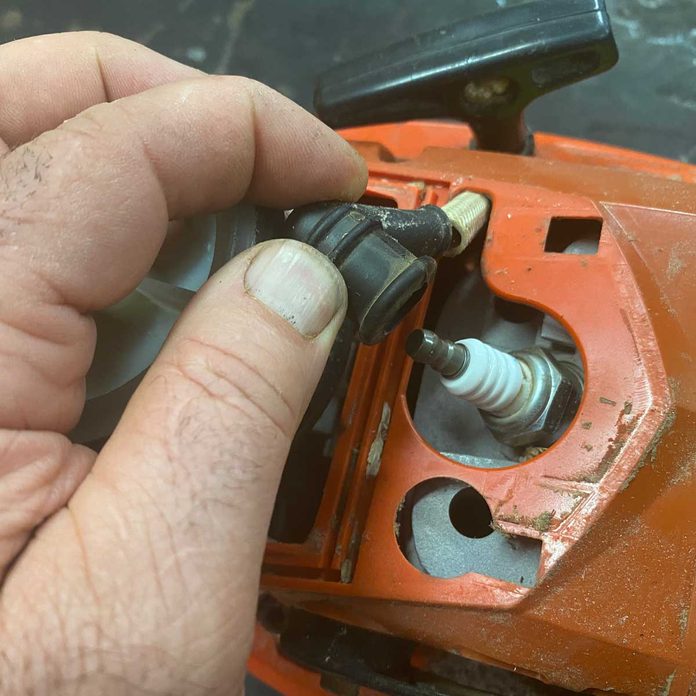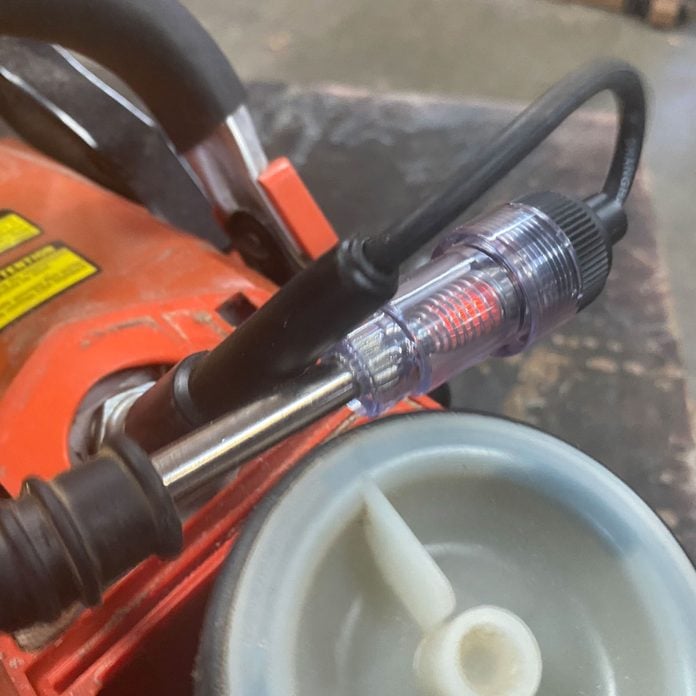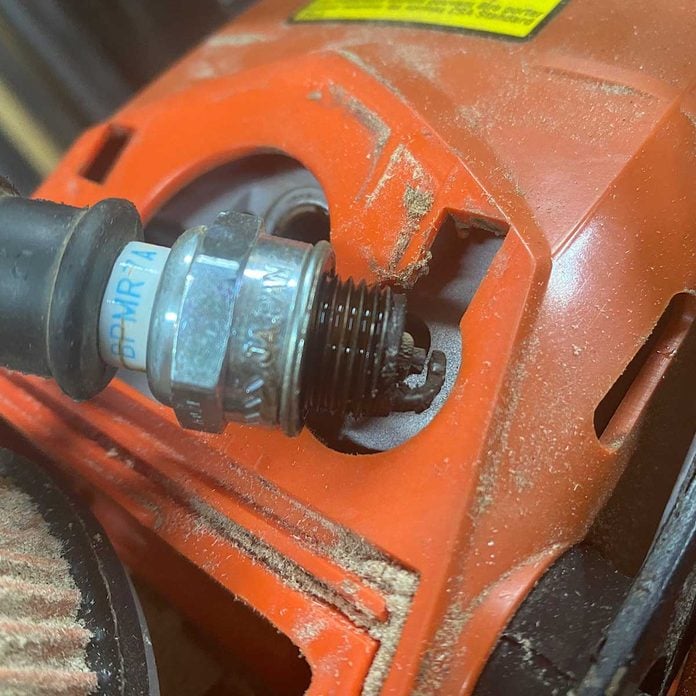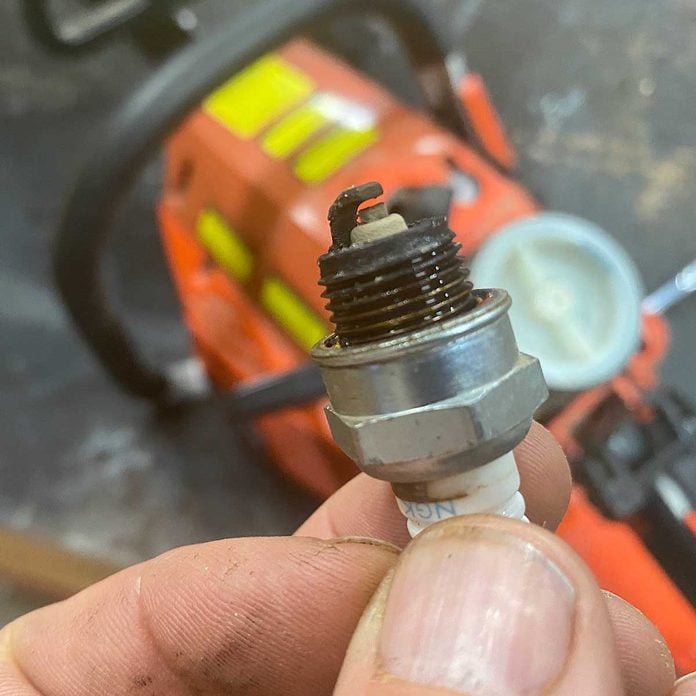Should Spark Plug Cap Have Continuity to Ground
How to Test a Spark Plug to See If It's Working
Every small gasoline engine has a spark plug, and this key component requires periodic inspection and testing. Learn how to do it here.
![]() Time
Time
An hour or less
![]() Complexity
Complexity
Beginner
![]() Cost
Cost
Free
Introduction
Spark plugs are found in all gasoline engines. Their job is to ignite the air/fuel mixture inside the engine with just the right timing. Age, use and poor fuel quality can all contribute to a spark plug that's dirty and doesn't spark properly.
Failure to start or hard starting are two symptoms of a bad spark plug, as is rough running, higher fuel consumption and less power than usual. Learning to test a spark plug is a basic part of troubleshooting any small engine. The job takes just a few minutes and costs little or nothing.
How spark plugs work
- Spark plugs are always located at the top of the cylinder head of small engines. Cylinders like these have cooling fins on the outside and are one of the largest parts of any small gasoline-powered engine.
- All spark plugs thread into a hole in the cylinder head.
- A thick wire and fitting pushed over the end of the spark plug delivers the electric power needed to make the hidden tip of the spark plug spark.
- The ignition system of the engine sends a pulse of very-high-voltage current through this wire and into the spark plug — typically 20,000 to 30,000 volts for a small engine.
- The tip of the plug sits just inside the combustion chamber of the engine in the cylinder head and includes a small gap.
- When high-voltage electricity encounters this gap, it jumps the air space on its way to complete the circuit by flowing into the engine block. This jumping creates a visible spark that ignites the air/fuel mixture inside the engine so it can run.
- All problems with spark plugs boil down to a handful of deficiencies that prevent or impair electricity from jumping the all-important spark plug gap.
Tools Required
Project step-by-step (4)
Step 1
Remove the spark plug wire
- Remove the shroud that covers the spark plug on a chainsaw or outboard motor. Small engines on lawn mowers and lawn tractors usually do not have spark plug shrouds.
- Pull the ignition wire off the end of the spark plug. Don't just yank on the body of the wire itself, though, because this can cause damage. Reach down around the sides of the spark plug and gently pull on the end fitting of the wire that sits over the top of the spark plug.
- If the cap and ignition wire don't want to come off, rotate the rubber fitting one way or the other as you pull.

Step 2
Test with a spark plug tester
- Attach a spark plug tester to the ignition wire. At the other end, the tester connects to the spark plug as it sits in your engine.
- Turn the ignition ON.
- Start the engine, or simply turn it over if it won't start, and watch the transparent sides of the tester. If no visible spark or glow is present, then you can be sure that no spark is occurring at the all-important tip of the spark plug. Does this mean the plug is bad? Not necessarily. The spark plug could be bad, yes, but lack of spark can also be caused by a fault somewhere else in the ignition system.

Step 3
Or, test without a spark plug tester
- Use a suitable spark plug wrench to loosen and remove the plug from the engine by rotating it counterclockwise. Of course, this has to happen with the ignition wire removed.
- Reconnect the ignition wire onto the top of the loose spark plug, then position the plug so the lower metal body is touching a metallic part of the engine cylinder head.
- Turn the engine over and watch the gap at the tip. Note that the engine can't run with the spark plug removed like this, but it will turn over freely. If the spark plug and the rest of the ignition system are working properly, you should see an obvious blue spark arcing between the tip of the inner central electrode of the plug and the curved metal top that arcs downward near it as the engine turns over.
- Check to make sure the ignition is ON if there is no visible spark, then try again. If the spark remains absent or weak, you're on track to sorting out the cause of your engine trouble.

Step 4
Assess your findings
- Look at the tip of the removed spark plug. A spark plug should come out of an engine with a central electrode that's got a light gray or brown residue. It should be free from any oily or fluffy black deposits that could allow high-voltage electricity to bypass the gap and fail to spark, preventing your engine from starting or running properly.
- Replace the spark plug with a new one of the same kind (a standard spark plug costs $5 to $8). If the new plug fails to make your engine start and run well, the problem is with some other part of the ignition or fuel system. You've proven that the spark plug is not the cause of the problem and your testing is complete.

Originally Published: February 11, 2021
Source: https://www.familyhandyman.com/project/how-to-test-a-spark-plug/
0 Response to "Should Spark Plug Cap Have Continuity to Ground"
Post a Comment